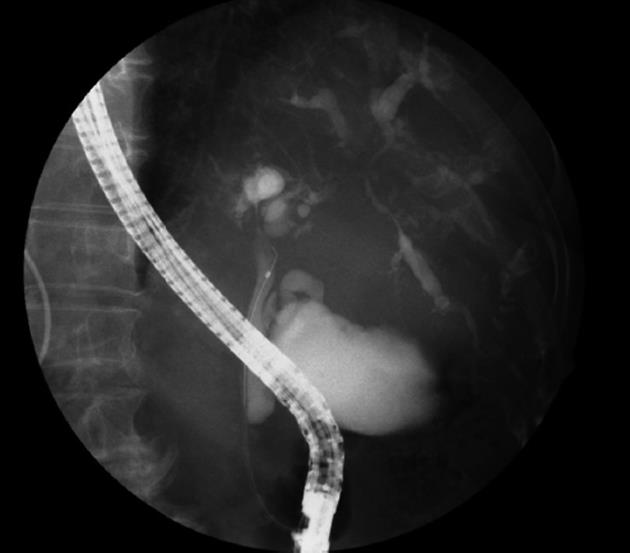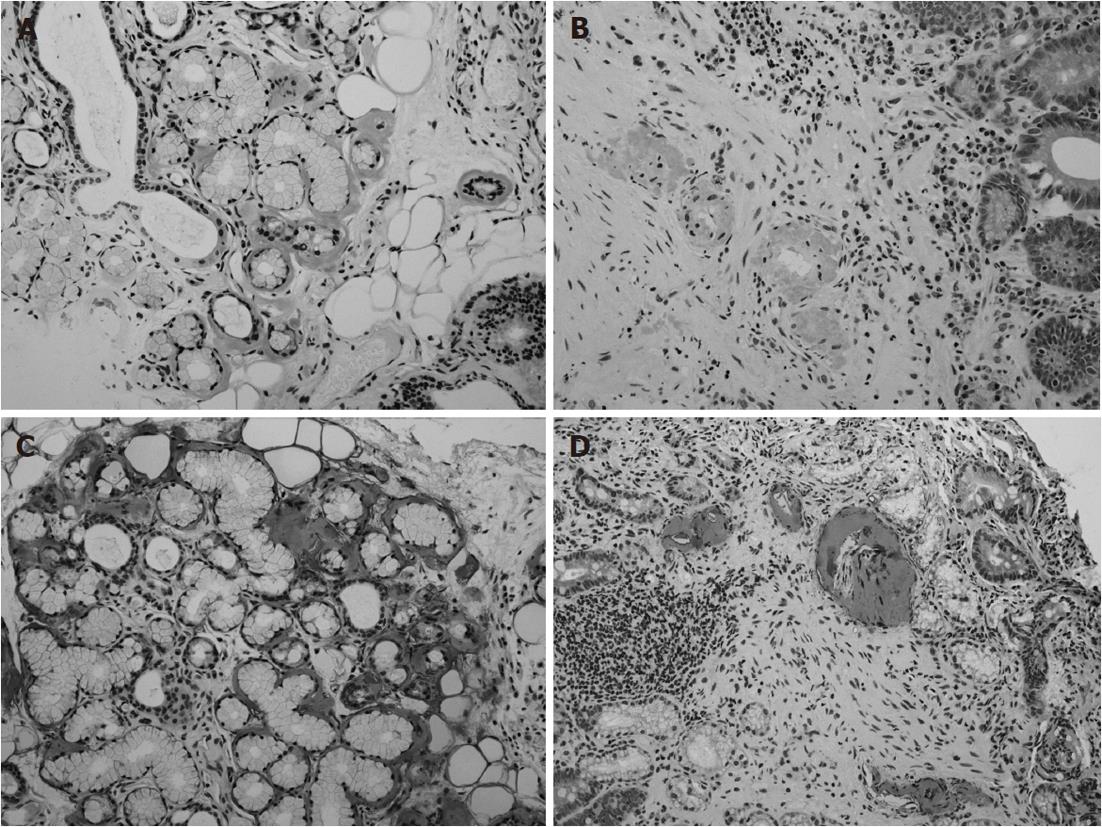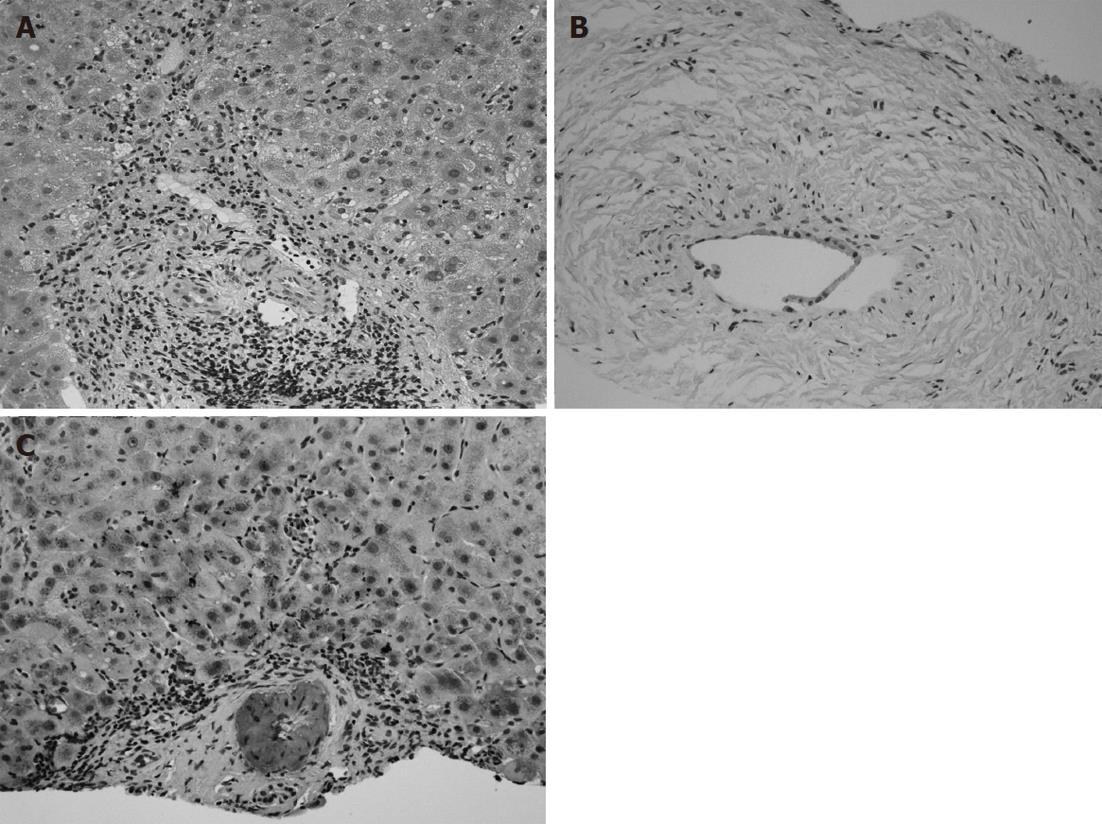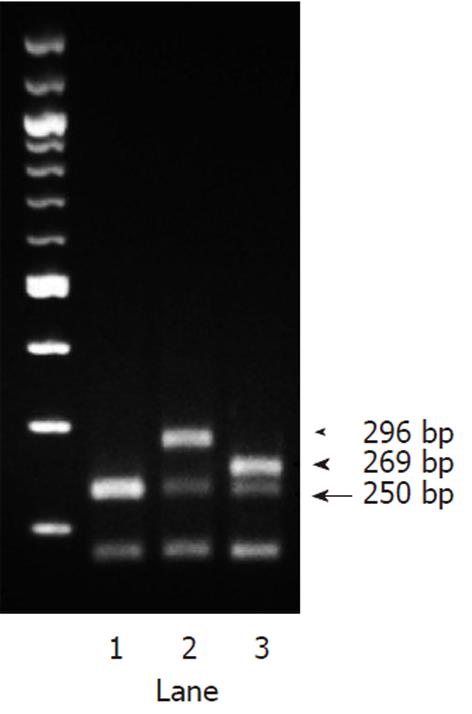Copyright
©2012 Baishideng Publishing Group Co.
World J Gastroenterol. Jan 14, 2012; 18(2): 192-196
Published online Jan 14, 2012. doi: 10.3748/wjg.v18.i2.192
Published online Jan 14, 2012. doi: 10.3748/wjg.v18.i2.192
Figure 1 Endoscopic retrograde cholangiopancreatography revealed multiple strictures of the hilar and intrahepatic bile ducts, with a “pruned-tree” appearance, accompanied by dilatation of the distal bile ducts.
Figure 2 Histology of the salivary glands and the sto-mach by hematoxylin and eosin stain (200 ×).
Amorphous eosinophilic materials in the subglandular and stroma of the salivary glands (A) and submucosal stroma of the stomach (B) were demonstrated. They were found to be Congo-red-positive. Immunohistochemical staining with anti-human amyloid A antibody (200 ×) confirmed a positive AA stain in the salivary glands (C) and stomach (D).
Figure 3 Histology of the liver by hematoxylin and eosin stain.
An increase in lymphoneutrophilic infiltrates in the portal tracts, interface hepatitis with ductular proliferation, cholate stasis (400 ×, A), and damaged interlobular bile ducts with collagenous periductal thickening (200 ×, B) were revealed. Amyloid deposition in the vessel walls of the portal tracts was also apparent in immunohistochemical staining (200 ×, C).
Figure 4 Serum amyloid A1 genotyping by polymerase chain reaction-restriction fragment length polymorphism analysis (2% agarose gel electrophoresis).
Arrow (250 bp), arrow head (269 bp) and small arrow head (296 bp) correspond to serum amyloid A1 allele 1.5, 1.3 and 1.1, respectively. Lane 1: 1.5/1.5 homozygosity (our patient); Lane 2: 1.1/1.5 heterozygosity (control patient); Lane 3: 1.3/1.5 heterozygosity (another control patient).
- Citation: Kato T, Komori A, Bae SK, Migita K, Ito M, Motoyoshi Y, Abiru S, Ishibashi H. Concurrent systemic AA amyloidosis can discriminate primary sclerosing cholangitis from IgG4-associated cholangitis. World J Gastroenterol 2012; 18(2): 192-196
- URL: https://www.wjgnet.com/1007-9327/full/v18/i2/192.htm
- DOI: https://dx.doi.org/10.3748/wjg.v18.i2.192












